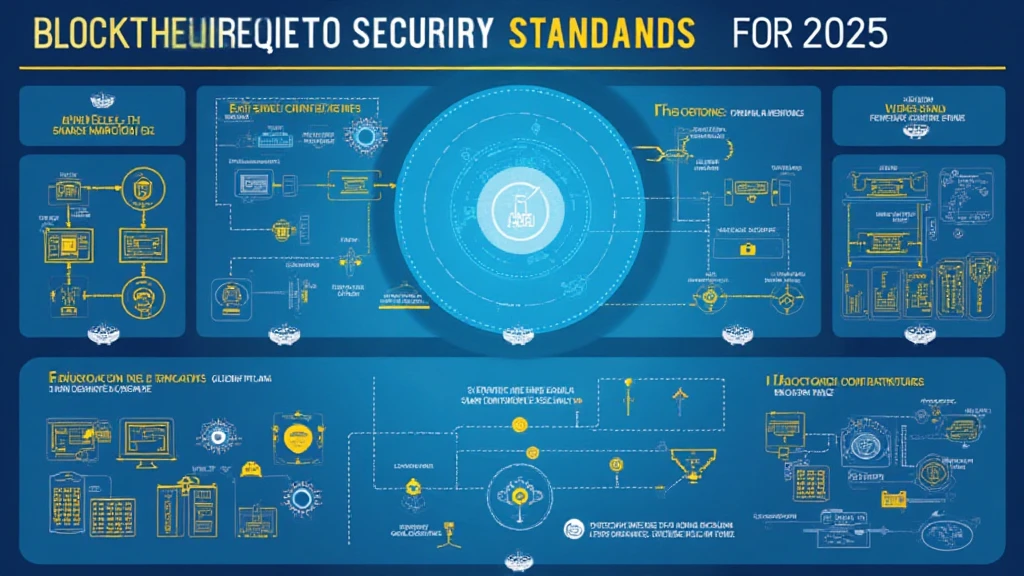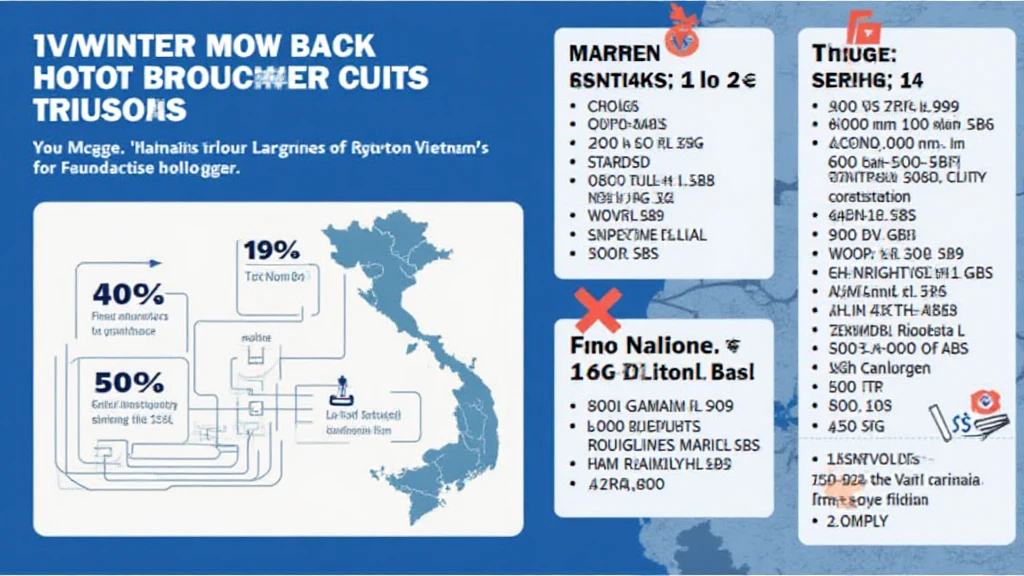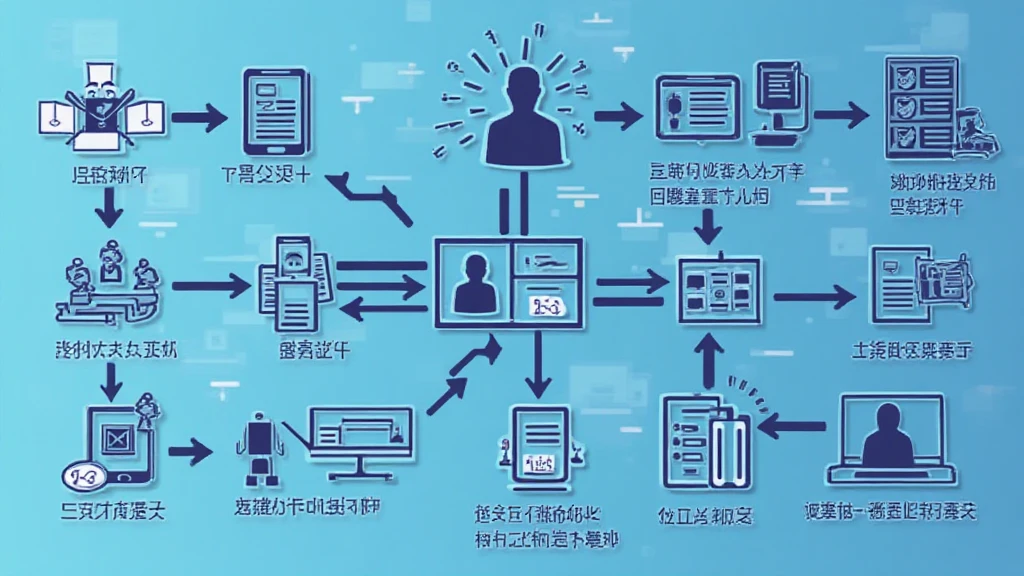2025 Blockchain Security Standards: A Comprehensive Guide for Digital Asset Protection
With $4.1B lost to DeFi hacks in 2024, it has never been more critical to ensure that blockchain transactions and digital asset storage are secure. Vietnam, a rising star in the crypto world, is experiencing significant growth in user adoption, paving the way for new opportunities and challenges.
This article delves into the critical aspects of blockchain security, examining standards for 2025 and addressing the risks associated with Vietnam’s crypto market. We’ll explore pertinent topics such as consensus mechanisms, security protocols, and suggest practical steps for ensuring digital asset protection. Let’s break it down.
1. Understanding Vietnam’s Crypto Landscape
The crypto market in Vietnam has witnessed a remarkable surge, with a user growth rate of 200% over the past two years. As more Vietnamese citizens invest in cryptocurrencies, the importance of robust security standards becomes increasingly apparent.

The government is also taking steps to regulate cryptocurrency activities, which is critical for fostering a secure environment. Despite the evolving nature of regulations, challenges like hacking and fraud remain prevalent.
- Vietnam’s crypto user growth: 200%
- Government regulations in progress
- Emerging risks in the market
2. Consensus Mechanism Vulnerabilities
Consensus mechanisms are at the core of blockchain technology. They ensure agreement among network participants on the validity of transactions. However, vulnerabilities can lead to significant security breaches.
For example, the Proof of Work (PoW) mechanism, while secure, is energy-intensive and prone to 51% attacks, where a single entity controls the majority of the hash rate. In contrast, Proof of Stake (PoS) offers scalability but is vulnerable to nothing-at-stake issues.
Understanding these mechanics is vital for anyone investing in or developing blockchain projects. You wouldn’t keep your money in a bank without understanding how it operates, right?
- PoW: Energy-intensive but secure
- PoS: Scalable yet potentially vulnerable
3. Security Protocols for 2025
The blockchain security protocols of 2025 include a variety of advancements aimed at increasing both operational efficiency and user confidence. Here are some key standards:
- Multi-Signature Transactions: Require multiple approvals for a transaction to enhance security.
- Blockchain forensics tools: Essential in tracing funds and reducing fraudulent activities.
- Smart contract audits: Regular checks to identify vulnerabilities in code before deployment.
3.1 Multi-Signature Transactions
In a world where digital assets are constantly targeted, multi-signature wallets act like a bank vault—with multiple keys needed to access the funds. It adds an extra layer of security and reduces the risk of unauthorized access.
3.2 Blockchain Forensics Tools
Utilizing blockchain forensics software allows organizations to track and trace cryptocurrency transactions, significantly mitigating the risk of fraud. The growth of these tools is an essential aspect of maintaining security in the Vietnamese market.
3.3 Smart Contract Audits
Regular smart contract audits are necessary to find any vulnerabilities that could be exploited. Remember, it’s better to identify a flaw during testing than to deal with the fallout after deployment.
4. Risk Analysis in Vietnamese Crypto Investments
Risk analysis is a fundamental process in any investment strategy, especially in the volatile world of cryptocurrencies. In Vietnam, investors must consider local regulations, market trends, and technological advancements.
- Regulatory risks: Adapting to new laws
- Market risks: Understanding volatility levels
- Technology risks: Keeping up with security standards
5. Practical Steps for Ensuring Security
Here are some actionable steps that investors can take to secure their digital assets:
- Use hardware wallets for storing cryptocurrencies offline.
- Regularly update and audit software wallets, ensuring they are free from vulnerabilities.
- Diversify your investments to mitigate risk.
- Stay informed about developments in blockchain technology and security practices.
By following these steps, users can help safeguard their assets against potential threats.
Conclusion: The Future of Security in Vietnam’s Crypto Landscape
Vietnam’s potential as a leading player in the crypto market is evident, but the associated risks cannot be ignored. As the landscape evolves, understanding the implications of security standards and risk factors will be crucial for both users and developers.
By staying informed and adopting robust security practices, investors can thrive in this dynamic environment. Remember, protecting your digital assets is not just about technology; it’s about staying ahead of potential threats. For further insights, check out our comprehensive guide to security standards.
In summary, the direction toward which blockchain technology is headed is promising, and platforms like mycryptodictionary aim to help users navigate these complexities effectively.
About the Author: Dr. Emily Tran, a renowned blockchain security expert with over 10 published papers in the field, has worked on multiple reputable projects concerning crypto audits, emphasizing security in every aspect of blockchain technology.





